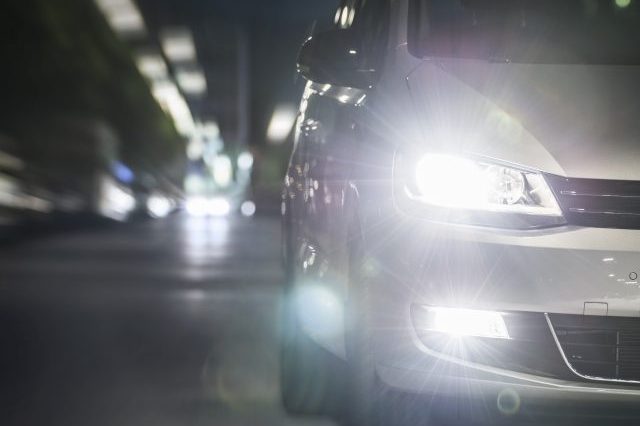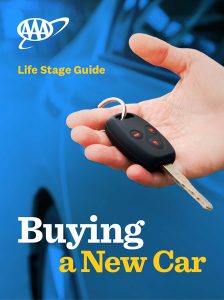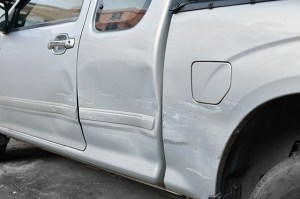Drivers are increasingly complaining about the intense LED headlight glare that comes from newer vehicles, but the issue is not as clear as one might think.
The U.S. is taking baby steps toward smart headlight systems that adjust their beams based on what is in their path and look less harsh to oncoming drivers, but they still could be years away from hitting the roads.
Why Are Headlights So Bright These Days?
Some experts say several factors are contributing to drivers reporting glare. One is that LED lights are not brighter, but the blueish-white light emitted is more irritating to the human eye. The others relate to the position of the headlights, the height of newer vehicles and older drivers.
AAA has published numerous studies about headlights and related issues such as glare and did not find a problem, according to Greg Brannon, director of automotive engineering and industry relations for AAA Inc. “LEDs put more light on roads where people need it,” he said. “There is no evidence that LED lights are a hazard.”
Drivers Disagree
Still, drivers are reporting discomfort and being blinded by oncoming cars with LED headlights and some are calling for them to be banned.
“There is a problem,” acknowledged Dr. John Bullough, director of the Light and Health Research Center at the Icahn School of Medicine at Mount Sinai in New York City. “There are some issues (with headlights) people are experiencing more than they did 10-to-20 years ago, and they are making more people complain. But the basic regulations for headlights and how they produce light in certain directions have been the same for several decades. Technology has changed.”
Over the past 10 years, automakers transitioned to LEDs and high-intensity discharge (HID) headlights from halogen headlights, which produce soft yellow light, which is easier on the eyes. On the plus side, LED bulbs last longer and an LED array has many small bulbs, which can be shifted in different directions to shape the beam. The white light also makes it easier to spot road markings and more closely resembles daylight.
But there are drawbacks. “They tend to make glare more noticeable and uncomfortable,” according to Bullough.

Calls to Regulate LED Headlights
Groups such as the Soft Lights Foundation argue that the use of LED and HID headlights “has become a source of dangerous, blinding glare,” and has an online petition asking Congress and federal agencies to regulate LEDs. More than 50,000 people have signed the petition so far.
Other factors are contributing to people experiencing headlight glare, according to Bullough. Many vehicles are higher now, so lights on SUVs and trucks shine directly into the eyes of sedan drivers, he said. “Passenger cars get a brighter splash of light.”
Also, headlights are often misaligned, and drivers don’t realize it. “Consistently, over a few decades, a lot of cars have poorly misdirected headlights,” said Bullough. “If they are too high, the beam hits (oncoming drivers) in the eyes. If they are too low, drivers can’t see much past their car.” Not all states require headlight alignment to be assessed, he added.
The aging of the U.S. population also plays a role, Brannon maintained. There were almost 48 million licensed drivers ages 65 and older in 2020, according to the latest research from the Centers for Disease Control and Prevention. That is a 68% increase over 20 years ago. “New technology looks different coming toward older drivers, when they are used to seeing a soft yellow glow,” he said. “The LED and HID lights draw drivers’ attention, and then they have a problem with a glare.”
People’s ability to see in the dark decreases every year after age 40, Brannon added, and drivers are less able to recover from glare. To cope with glare, Brannon recommended drivers modify their gaze and look at the road, not the oncoming headlights.
Smarter Headlights Are on the Way
If anything, headlights on U.S. cars should be brighter, Brannon said. The U.S. has a much lower maximum output for high beams than most countries and standards have not changed in decades. AAA research shows that 64% of American drivers do not extensively use their high beams, often out of concern for other drivers. But driving with low beams all the time can be a safety hazard. “If you are driving with low beams over 35 mph and encounter something in the road, you can’t stop in time,” according to Bullough.
Changes are coming, although slowly. More new cars in the U.S. have automatic high/low beam switching systems, which allow drivers to use their high beams all the time, because the headlights switch to low beams if they detect an oncoming vehicle.
Even more advanced technology is available, but not in the U.S., and although high-tech headlights have been approved here, it still could be years before drivers actually see them. Since 2013, Europe and most of the world have been using adaptive driving beam (ADB) headlights, which produce more light and automatically change the direction of the beam to reduce glare for oncoming drivers or pedestrians while not losing forward illumination.
Despite urging from multiple organizations, including AAA, the type of ADBs used by most of the world have not been approved for use in the U.S.
Crafting New ADBs
In 2022, the National Highway Traffic Safety Administration (NHTSA) approved ADB headlighting systems similar to what is used in other countries, but with different criteria for performance, according to Bullough.
The U.S. Department of Transportation drew up glare-proof specifications for ADB headlights, but more testing and information are required. Vehicle manufacturers are waiting for detailed specifications before starting to build and install these systems, to avoid misinterpretations and recalls, according to Bullough.
Because these headlights will be brighter, the changes also will require some adjustments by drivers, but the headlights are overdue, said Brannon. “Modern headlight systems put light where you need it,” he said. “Over time, people will become more accustomed to it.”
Need headlight maintenance? Visit your nearest AAA Approved Auto Repair Facility. Members can save up to $75 per visit – that pays for your membership! Search for AAR facilities.
How do you feel about headlight glare? Share your thoughts in the comments below.
218 Thoughts on “What’s the Story With Headlight Glare?”
Leave A Comment
Comments are subject to moderation and may or may not be published at the editor’s discretion. Only comments that are relevant to the article and add value to the Your AAA community will be considered. Comments may be edited for clarity and length.












I don’t know who Mr. Bannon spoke with to get his facts but everyone I know, young and old, is complaining about the glare. No mention was made of another problem I’ve experienced with these headlights. I drive a sedan but with one of the higher SUV’s behind you, the headlight beams bounce off the rear view and side mirrors, temporarily blinding you.
I agree with some of the other comments that I have read. LED headlights are blinding, whether they are coming towards you or when reflected in your rear view window. I also find Greg Brannon’s comment of “looking at the road, instead of the, oncoming oncoming vehicles headlights” to be very condescending and flippant. It’s not just “older” people’s eyes that are an issue. It’s also people with epilepsy and such that have the biggest issue.
The new led white lights are brighter than halogen lights! It’s not just seniors complaining, my grandchildren complain as well. I try to look to the side of the road when I feel blinded but it does not help enough. The government needs to mandate automatic dimmer sensors now!! Many drivers keep their bright lights on constantly and do not switch to low beams with oncoming traffic.
The glare from the LED beams is awful, even if the driver gazes at the road! The other problem with the glare is that it takes time for the eyes to recover and in that period of the glare to recovery it is also hindering the ability to see other elements that may be in the road or beside the road like pedestrians or bicyclists. Overall, as they are at the present time, they are more of a hazard than a safe option. The other problem is that many vehicles and especially trucks now have between 4-8 sets of lights instead of just 2. That, in the opinion of this respondent, also contributes to the problem of glare.
If Europe and other parts of the world use the technology of adaptive driving beam headlights, and they’ve used this since 2013, why is it taking the U.S. over 10 years to utilize these headlights in their cars? I guess big corporations have the money to keep politicians rich, rather than help the consumer.
AAA is finally acknowledging this safety issue. Thank you!
I admit it, I am 84 years young but in good health and with good eyesight and do not wear glasses. Last night I was returning from a fire department installation dinner on the northshore of the east end of Long Island. I was driving in a flat agricultural area with no street lights. The road was curvey and difficult to drive. As long as there was no oncoming traffic one could travel at a reasonable speed. Then out of nowhere around a curve came a pick-up truck with its high beams on. I immediately lowered my beams, the pick-up did not. I could not see the road which was twisting in front of me. I slowed down to almost a stop, paniced that I couldn’t see how to proceed because the headlights were so high, so bright, and uncoming at a higher speed then I would prefer. Yes, by slowing down and staying as far to the right on a country road I was able to survive. There are times when I have to drive alone at night and as long as I am in an urban area with street lights everything is fine. But in black, curvy and flat agricultural area it can be dangerous and life threatening. We need governmental regulations regarding this problem. We need to include enforcement of these regulations. Vehicles here in New York have to undergo annual checks. It wouldn’t be that hard to put in place new and better requirements regarding headlights on vehicles.
Whatever the cause is regarding this issue with car headlights it is definitely a problem. Old vs young, it doesn’t matter. They are blinding and make it dangerous to see the road.
The lights are very bothersome especially from behind. They reflect in not only my rear view mirror but the side mirrors too. I hope the usa starts moving more quickly to adopt what the rest of the world seems to be able to fix.
i worked for over 40 years on the second shift getting out of work anywhere from 1130pm to 230am
and i retired 10 years ago. i do travel at night and i’m blinded by the on coming lights. it’s not only
the height of the lights but it’s the lumens allowed by the DOT. Everything must go thru the DOT
and why are they allowing these bright lights on the highways blinding everyone, does someone
have deep pockets?
My husband & I are now using yellow glare prevention eyeglasses over our prescription glasses & they help immensely with this problem
I’m over 65 and having a terrible time driving at night with the glare from other headlights. Reading this article once again I learn that Europe is ahead of us in providing safety and making quicker needed changes on significant issues that impact our daily lives.
I have a new car with LEDs and a 2014 with dimmer halogens. I have driven in front of and behind both and I can tell you that the LEDs are not a significant problem at all. (Also, I’m almost 60 and have been more sensitive to light these days).
The elephant in the room is the fact that somewhere along the line, people were not educated to not always drive with your highbeams on. In fact, unless I’m on an extremely dark road, high beams for a normal use are not needed and don’t really help.
Just turn off your high beams folks.
Maybe it would be wise to speak to an optometrist on this issue? The eyes need time to adjust as all headlights are different and impact the eyes differently. All vehicles should have the same type headlights.
These new headlight also costs over $250.00 to replace, the car manufacturers are quite happy about that.
The largest problem is that far to many people drive with high beams in mixed traffic!
The correct way would have been “automatic LOW beams!!!
That would have been a far better, safer system.
High beams should only be used on roads with NO traffic at all.
Rudi
As I have gotten older, my vision has been causing big problems at night. Oncoming headlights make a big splash across my vision instead of clearly defined lights. All I could see was the patch lit up by my low beams somewhat ahead of my car. I could not see the highway divider, white lines, and shoulder, and typically lost my orientation to my lane and my position on the road. I had Original Equipment FOGLIGHTS installed and that largely solved the problem. These lights are not particularly bright, but aimed properly low, they illuminate the patch immediately ahead of the car – between the car and the low beams – as well as the sides of the road and shoulder. So I easily retain my sense of position in my lane. A huge help. I wonder if many people are installing brighter lights in search of a solution to this problem. But the answer is NOT more intense light, but the AREA illuminated. Hope this helps.
It is not only the glare of oncoming lights that is a problem but also the glare from lights from cars behind that reflects into mirrors.
when someone gets too close to me at night, i just play with my rear view mirror and when they
get hit with the glair of my rear view mirror they usually back off.
I agree.Those drivers are even more dangerous, because they are right on top of you and you cannot see in the mirror because of the glare.
PLEASE, PLEASE, PLEASE EDUCATE YOURSELF . . . CLICK ON “Older Comments” & Read my “Comments” of 3/18/24 (3) & 3/5/24 (3). Bob (& EVERYONE) The reason LEDs are as bad as high beams is because WAAAAY too many of them are AIMED TOO HIGH. HIGH BEAMS ARE NOT BRIGHTER THAN LOW BEAMS. THEY ARE JUST AIMED HIGHER. When you turn on high beams, a 2nd filament in the same bulb comes on which is positioned so that its light is projected level, or close to level, rather than DOWN AT THE ROAD WHERE THE LOW BEAMS ARE SUPPOSED TO BE. Since emissions testing started, they can NOT take the time to check the aim of hdlts. for what they are allowed to charge; AND NO ONE IS ENFORCING IT.
EDUCATE YOURSELF ABOUT THIS , RATHER THAN COMPLAINING. MANY of you are probably PART OF THE PROBLEM. In my “older comments” I give 3 WAYS TO TELL IF Y O U R Hdlts. are TOO HIGH & need to be adjusted down. PLEASE HELP W/ THIS, DON’T BE PART OF THE PROBLEM !
Please give the link to Phil’s article about the 3 ways of testing high beams. Thanks.
Certainly the low beams are aimed too high. I asked the dealer if they can lower them they said no, they are at the legal height… not to mention I passed strict Massachusetts inspections 3 years in a row. I get high beamed 3 times an evening minimum beccause people think I have my highs on. As courtesy, I beam them back to let them know it’s not on purpose. The result is they are blinded even worse XD. Very dangerous situation for everyone involved.
The people defending the LED are really reaching for reasons. The fact is (whether they are brighter or not) the glare does bother drivers, old and young. I’m surprised there isn’t even more people complaining. The lights are a danger. They are as bad as high beams and there is nothing you or the driver of the car with them, can do about it.
Yes indeed. Advising drivers not to look at oncoming headlights? No one is looking at them; we are all tying, despite the blinding glare, to see what’s right In front of us.